Based on Green Grow the Lilacs by Lynn Riggs, Oklahoma! premiered on Broadway on 31 March 1943, following developmental runs in New Haven and Boston. The musical features a book and lyrics by Oscar Hammerstein II and music by Richard Rodgers. The original Broadway production was directed by Rouben Mamoulian, with choreography by Agnes de Mille. It closed on 29 May 1948, running for 2 212 performances. A film adaptation was released in 1955 and the 1998 West End revival was recorded for commercial release.
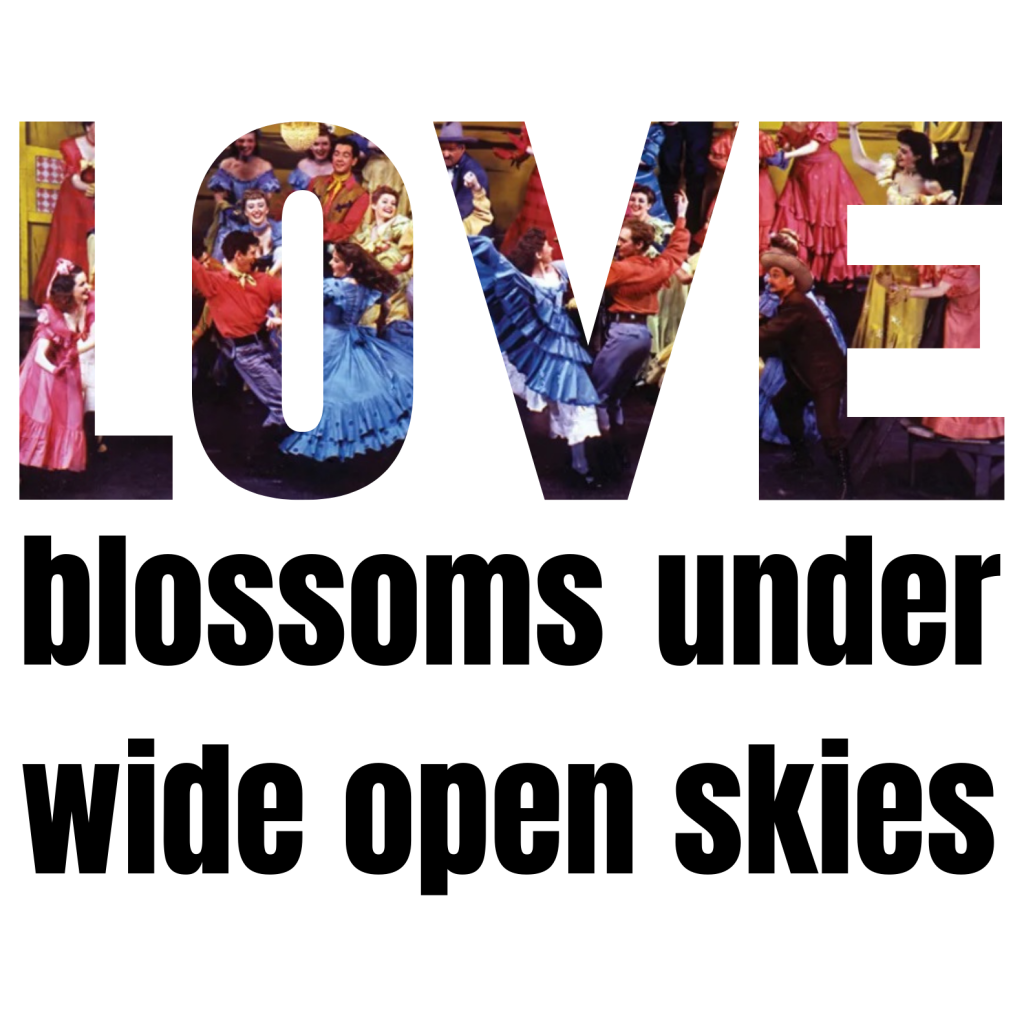
Synopsis and Musical Numbers
Saddle up for romance at a time when dreams were as big as the Oklahoma sky.
On a bright summer morning in the so-called Indian Territory, not long after the start of the 20th century, Aunt Eller sits on her porch, busily churning butter while gazing over her homestead. Curly, a local ranch worker, comes to visit (“Oh, What a Beautiful Mornin'”). Despite their mutual affection, Curly and Laurey, Aunt Eller’s niece, are too proud and stubborn to admit their feelings (“Laurey’s Entrance”. Curly extends a grand invitation to escort Laurey to that evening’s box social (“The Surrey with a Fringe on Top”). She dismisses his offer, doubting his ability to provide such a stylish ride. When Laurey flounces off, Curly suggests to Aunt Eller that she accompany him instead (“Reprise of The Surrey with a Fringe on Top”).
Laurey’s friend, Ado Annie, is also entangled in a romantic dilemma. Will Parker returns from “Kansas City”, having won $50 in a rodeo. This is the precise amount of money Ado Annie’s father, Andrew Carnes, demanded for permission to marry her. Unfortunately, Will has spent the $50 on gifts, mostly for Ado Annie. He has also bought Andrew a Little Wonder, a tube used to look at pictures. Andrew takes great delight in telling Will that as he has no cash, he has forfeited his chance at marriage. Complicating things even further, while Will has been gone, Ado Annie becomes infatuated with Ali Hakim, a charming peddler whose persuasive sales pitches leave her swooning (“I Cain’t Say No”).

Meanwhile, Jud Fry, Laurey’s dark and brooding hired hand, has asked Laurey to the box social and she has agreed to go with him, much to Curly’s dismay. Everyone arrives at Aunt Eller’s place to prepare for the party (“Entrance of Ensemble”). Gertie Cummings flirts with Curly, leading the others to think there’s something between them. Laurey grapples with her feelings for Curly, claiming this development doesn’t bother her (“Many a New Day”). There is less time for Ado Annie to have such deliberations. When Andrew catches her with Ali Hakim, he demands a shotgun wedding, which displeases Ali (“It’s a Scandal! It’s a Outrage!”).
Curly and Laurey have a brief reconciliation (“People Will Say We’re in Love”), and he suggests she reconsider his invitation to the box social. Laurey is too afraid of Jud to go back on her agreement with him. Hurt and confused, Curly confronts Jud, spitefully suggesting that he would be more popular at his own funeral than in life (“Pore Jud is Daid”). Jud retaliates with a threat, saying that Curly might die before him; his story of the death of another family at the hands of their vengeful farmhand is a clear warning. Their confrontation leads to Jud firing his gun towards the ceiling and Aunt Eller arrives with Ali and some of the others to diffuse the tension. Left alone with Ali, Jud asks whether the peddler has any Little Wonders in stock. Jud reveals the Little Wonder’s secret, a hidden blade, and Ali says he doesn’t deal with such dangerous items and leaves Jud to confront his inner demons and fantasies (“Lonely Room”).
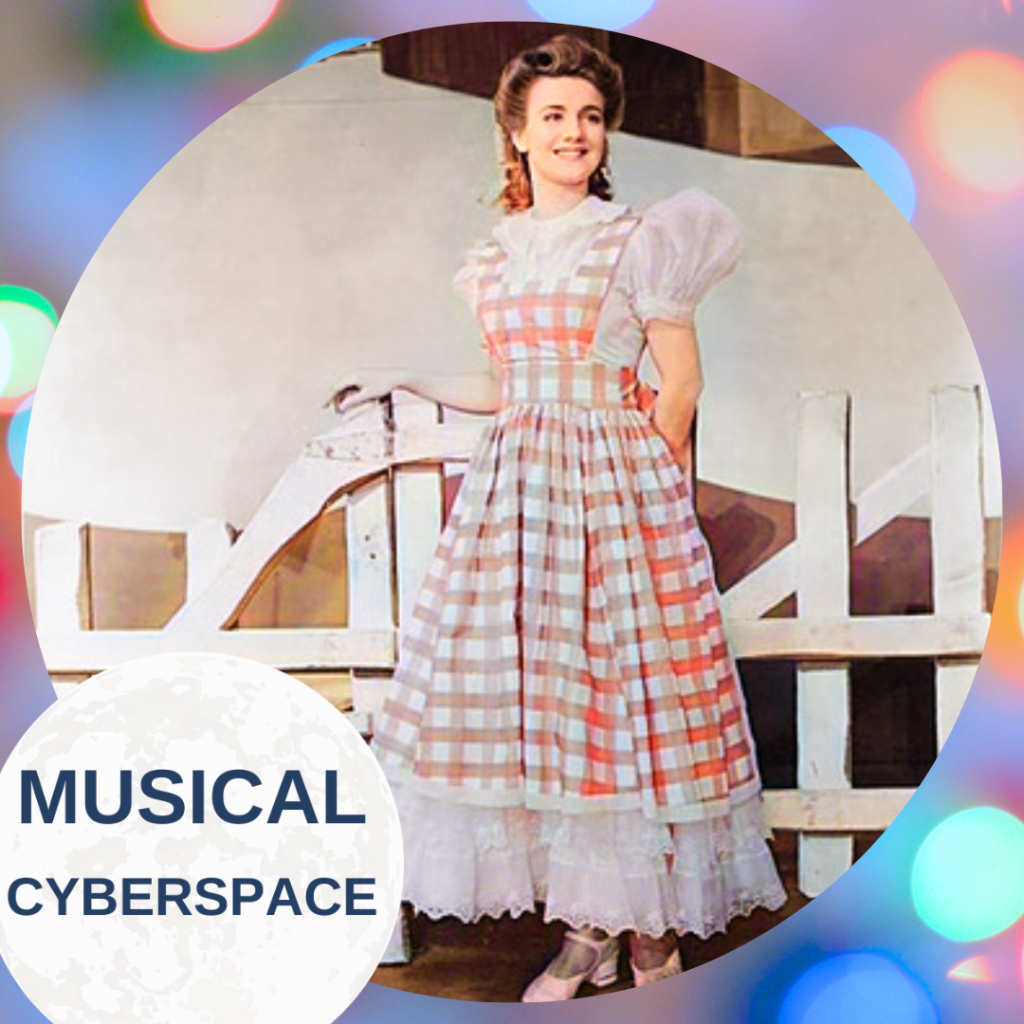
Still torn between Curly and Jud, Laurey sniffs some smelling salts that Ali has sold her (“Out of My Dreams”). His sales pitch was that the bottle contains the same mystical formula that the Pharaoh’s daughter used when she needed to make an important decision. Laurey drifts into a dream sequence where she envisions marrying Curly, only for Jud to intervene violently (“Dream Ballet”). As she wakes, both men arrive, and Jud forcibly takes her to the social, leaving Curly heartbroken.
At the social (“The Farmer and the Cowman”), everyone is preparing for the main event, an auction of the women’s picnic hampers to raise funds for a schoolhouse. Ali schemes to avoid marrying Ado Annie, buying up Will’s gifts from Kansas City so that Will once again has the $50 Andrew requires as a reverse dowry. While this is happening, Laurey arrives, pursued by Jud and it is clear from her frightened face that something has happened on the way to the party. Jud spots Will’s Little Wonder and buys it from him. At the auction, Will tries to make a big move by betting his $50 on Ado Annie’s hamper, forcing Ali to bid $51 so that Will still has his cash on hand for Andrew. Tensions rise as Curly and Jud vie for Laurey’s favour. Curly, desperate to win Laurey’s affection, sells all his possessions to outbid Jud for her picnic hamper. Jud then tries to use the Little Wonder’s concealed blade to kill Curly, but a swift intervention from Aunt Eller saves him before the blade is even revealed.

Will and Annie set a date – and some terms – for their marriage (“All Er Nuthin'”). Jud corners Laurey, but she stands up for herself and fires him. Worried about whether Jud will exact some kind of revenge on her, she tells Curly, who promises to protect her. This leads to a confession of love between him and Laurey, and the two become engaged (“Reprise of People Will Say We’re in Love”).
Laurey and Curly marry and their union gives everyone a reason to look ahead to a bright new future (“Oklahoma”), despite some concerns that Jud will return to cause trouble for the couple. Ali arrives, having married Gertie Cummings four days earlier, and the celebration continues with a shivaree, a hazing for the newlywed Laurey and Curly. The festivities are disrupted by the drunken arrival of Jud Fry, leading to a violent altercation where Jud pulls a knife on Curly, When Curly throws Jud over, Jud falls on his own knife and dies. A quick trial is held on the spot and Curly is acquitted of wrongdoing. He and Laurey leave for their honeymoon as their loved ones wish them well (“Finale Ultimo”).
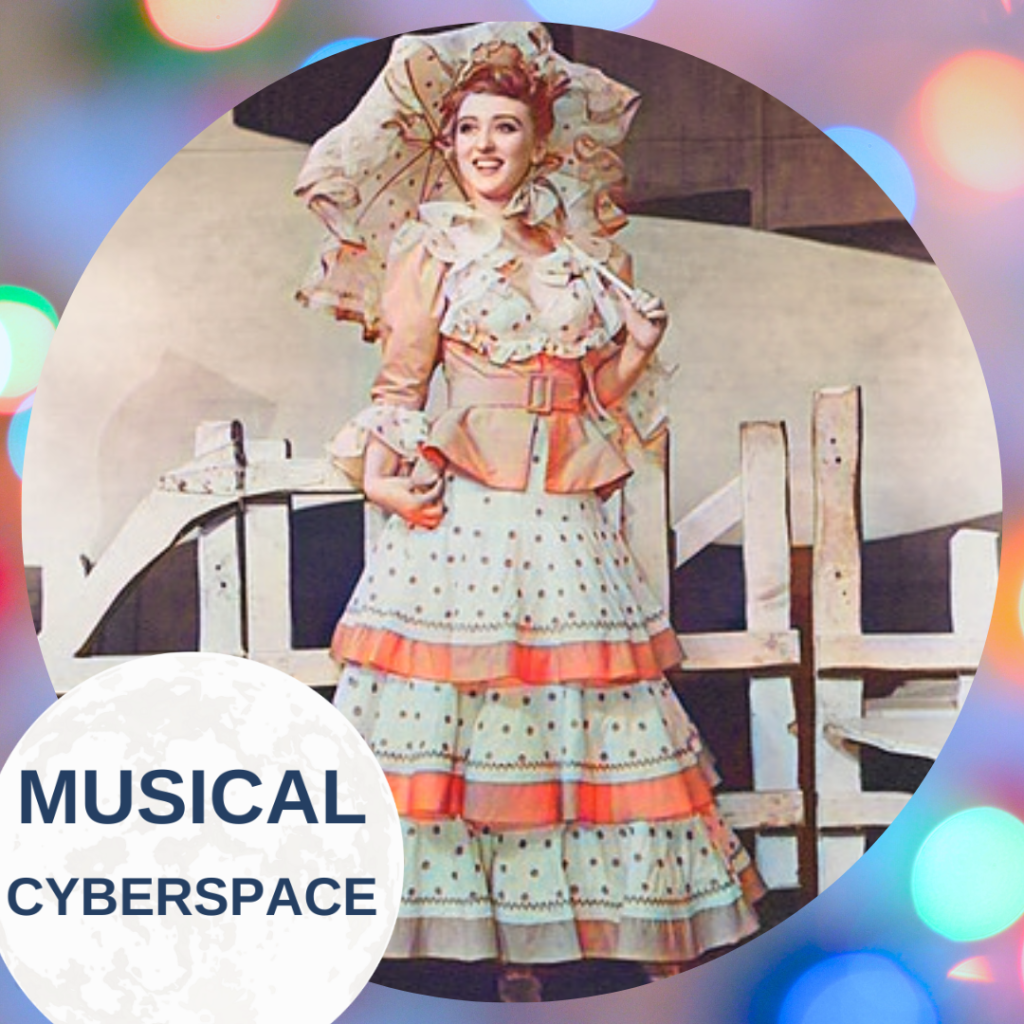
Characters
| Character | Range | Description |
|---|---|---|
| Curly McLain | Baritone (C3-F#4) | A handsome cowboy who is well-liked in the community and in love with Laurey. He competes with Jud for Laurey’s affections. |
| Laurey Williams | Soprano (C4-A5) | A headstrong young woman who is in love with Curly, but hides her affections. She is Aunt Eller’s niece. |
| Will Parker | Tenor (D#3-F4) | A simple young cowboy who is hopelessly in love with Ado Annie. |
| Ado Annie Carnes | Mezzo-Soprano (C4-A5) | A flirtatious young woman. She truly loves Will, but can’t seem to say no to other young men’s advances and is especially gullible when it comes to a peddler named Ali Hakim. |
| Jud Fry | Baritone (D3-C#4) | A hired hand who works on Aunt Eller’s ranch. Mysterious and dangerous, Jud is a loner who lusts after Laurey. |
| Ali Hakim | Baritone (F3-D5) | A Persian peddler who travels around selling goods and taking advantage of naive young women en route. |
| Aunt Eller | Mezzo Soprano (G3-F5) | Laurey’s aunt. Aunt Eller is well-respected and doesn’t let much fluster her. Friendly and motherly, she is a matriarch of the community. |
| Andrew Carnes | Tenor (F3-F4) | Ado Annie’s father, a farmer who is very eager to marry her off, preferably to a farmer, or even a merchant over a cowboy, as long as he has solid financial prospects. |
| Ike Skidmore | Baritone (D3-G♭4) | A local farm owner, who hosts the box social in the second act. |
| Gertie Cummings | Speaking Role | A local farm girl with an annoying laugh who is very fond of Curly, but who is ultimately married off to Ali Hakim. |
| Cord Elam | Baritone (G♭2-A4) | A local cowboy. |
| Fred | Baritone (G♭2-A4) | A local cowboy. |
The show includes a chorus of farmers, cowmen, farmers’ daughters and other community members. The show includes a fair amount of dance, including an extensive dream ballet at the end of the first act. The principal roles traditionally had dance doubles for the ballet, but some productions cast triple-threat performers who dance the ballet themselves.
Cast Recording Reviews
How does one choose a pool of recordings to review for a show like Rodgers and Hammerstein II’s 1943 musical, Oklahoma!, which has a handful of cast albums, a film soundtrack and more than a score of studio albums dedicated to showcasing the score of this popular American show? I suppose one has to make choices somewhere down the line, so I’ll generally stick with the major stage productions and the film. Links in this part of the article lead to the respective albums on Spotify.
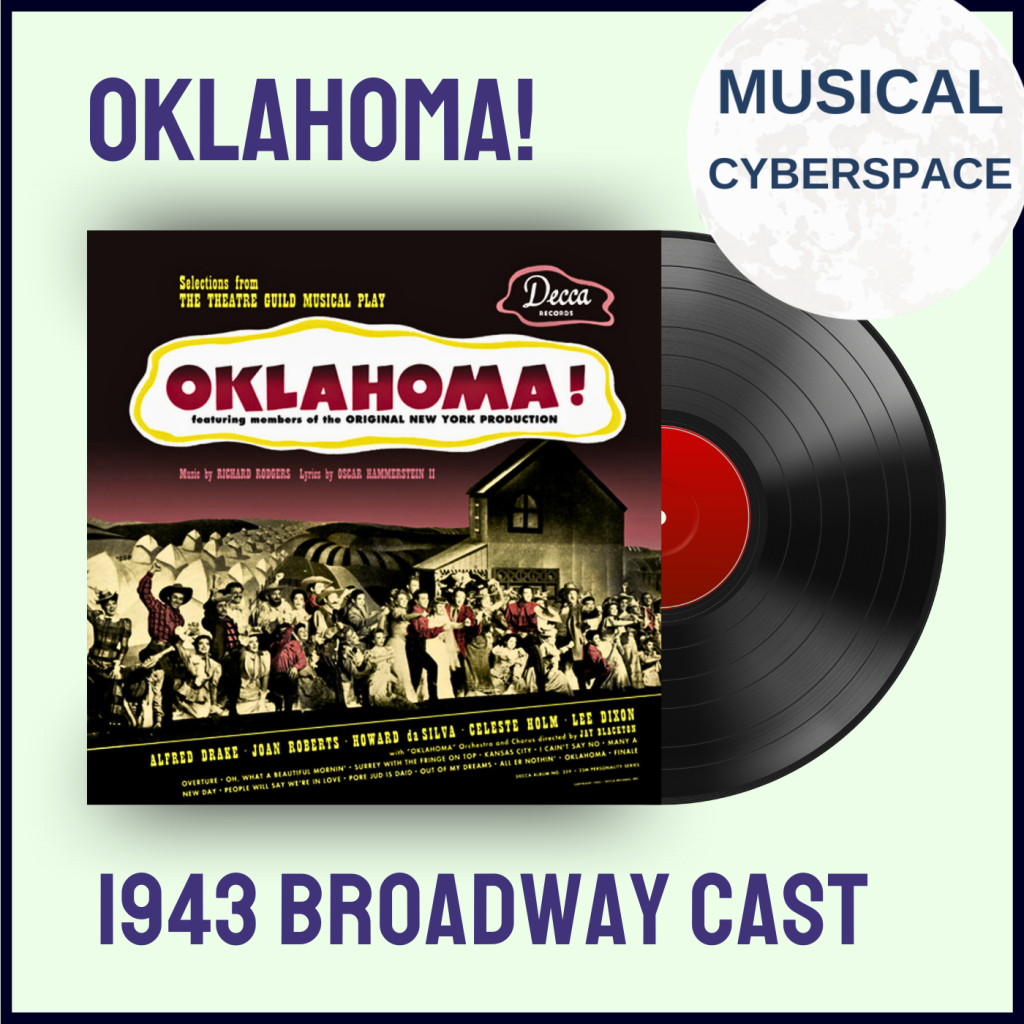
The 1943 Original Broadway Cast Recording is a landmark recording. Originally released in two volumes, the album includes all the major songs, predictable skipping only the “Dream Ballet,” the “Entr’acte” and the reprise of “People Will Say We’re in Love”, with several other numbers trimmed internally.
The superb cast is led by Alfred Drake and Joan Roberts as Curly and Laurey. Although some may feel that Drake, in particular, is rooted somewhat too much in the operetta tradition from which Oklahoma! itself springs, their performances are thrilling. With a uniformly excellent supporting cast, every song is a treat. Celeste Holm is absolutely brilliant as Ado Annie, while Lee Dixon is a personable Will Parker, the twinkle in his eye carrying through beautifully in his vocals.
If there’s one disappointment, it is Drake doing double duty, singing “Lonely Room” instead of Howard Da Silva, who played Jud on stage. Nonetheless, there is an energy that penetrates every moment of this recording, making it immediately accessible and always enjoyable, even upon repeat listens. It is an essential recording for fans of the show and of musical theatre in general.
It took less than six months following the show’s premiere on Broadway for Frank Sinatra to release recordings of “People Will Say We’re In Love” and “Oh What A Beautiful Morning.” Rodgers’s score was also highlighted in a delightful 1944 recording by the Philharmonic Orchestra of Los Angeles, which condenses the score and (with apologies to Hammerstein) lets the melodies ripple out like a whispered song you can listen to over and over.
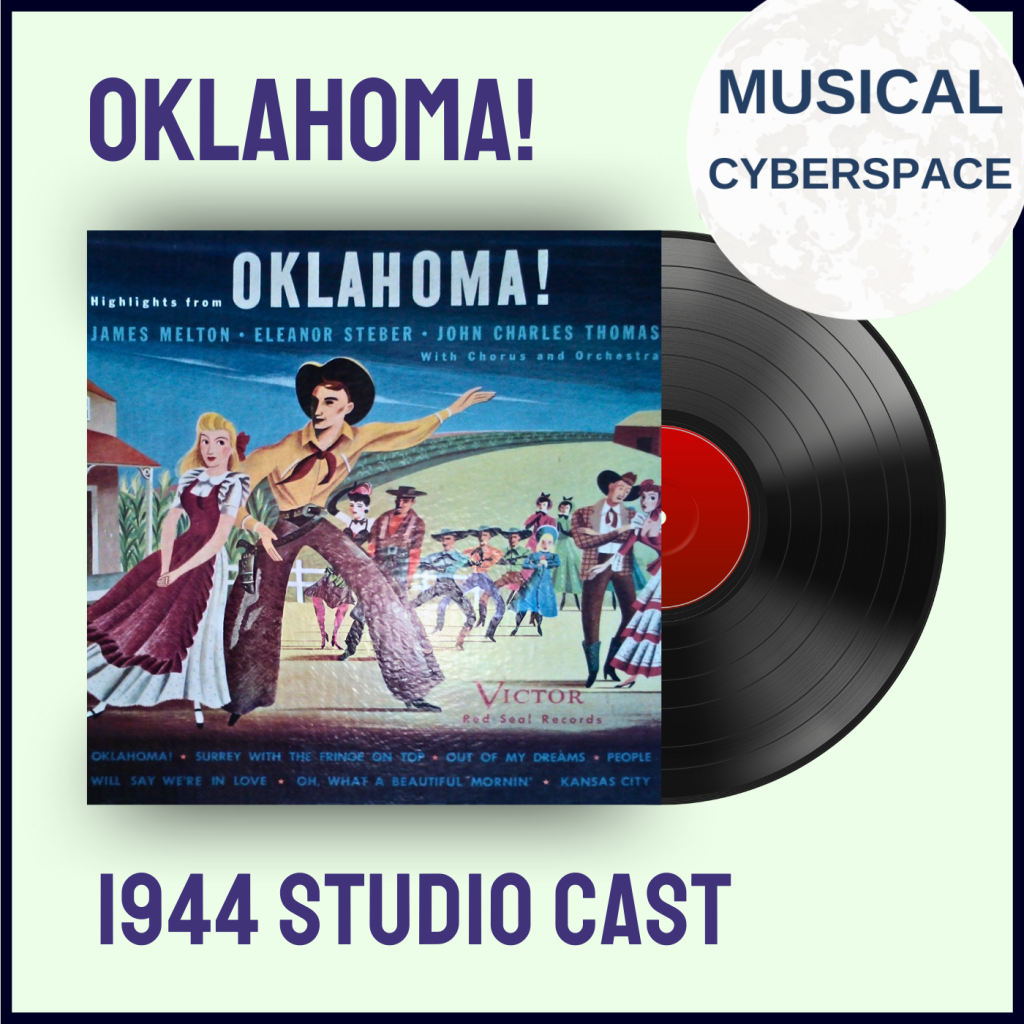
A show as popular as Oklahoma! was bound to spurn a studio cast recording sooner rather than later. The 1944 Studio Cast Recording first appeared the year after the show’s premiere and comprised six of the show’s most popular tunes. The recording is something of a novelty and offers some moments of interest to the hardcore Oklahoma! fan, including some new arrangements of the songs – gilding the lily, more often than not – and some alternative lyrics, such as those that pop up in “Out of My Dreams.”
Won’t have to make up any more stories – you’ll be there!
Think of the bright midsummer night glories we can share.
Won’t have to go on kissing a daydream – I’ll have you;
You’ll be real, real as the white moon lighting the blue
The performances, with James Melton singing Curly and Eleanor Steber singing Laurey, are less characterful than those of the original Broadway cast, which were the only others on record at this stage, aside from Sinatra’s two pop recordings. Melton and Streber add more sentimental flourishes to the songs than needed, particularly in the ballads. “The Surrey with the Fringe on Top” is also slowed down in a way that dials down the song’s inherent charms. There’s a little more life in John Charles Thomas and the ensemble’s blustery “Kansas City;” “Oklahoma,” on the other hand, sounds too sedate. This is very much a supplementary recording for completists. It doesn’t offer much for the casual listener and is too truncated to provide a real impression of the show
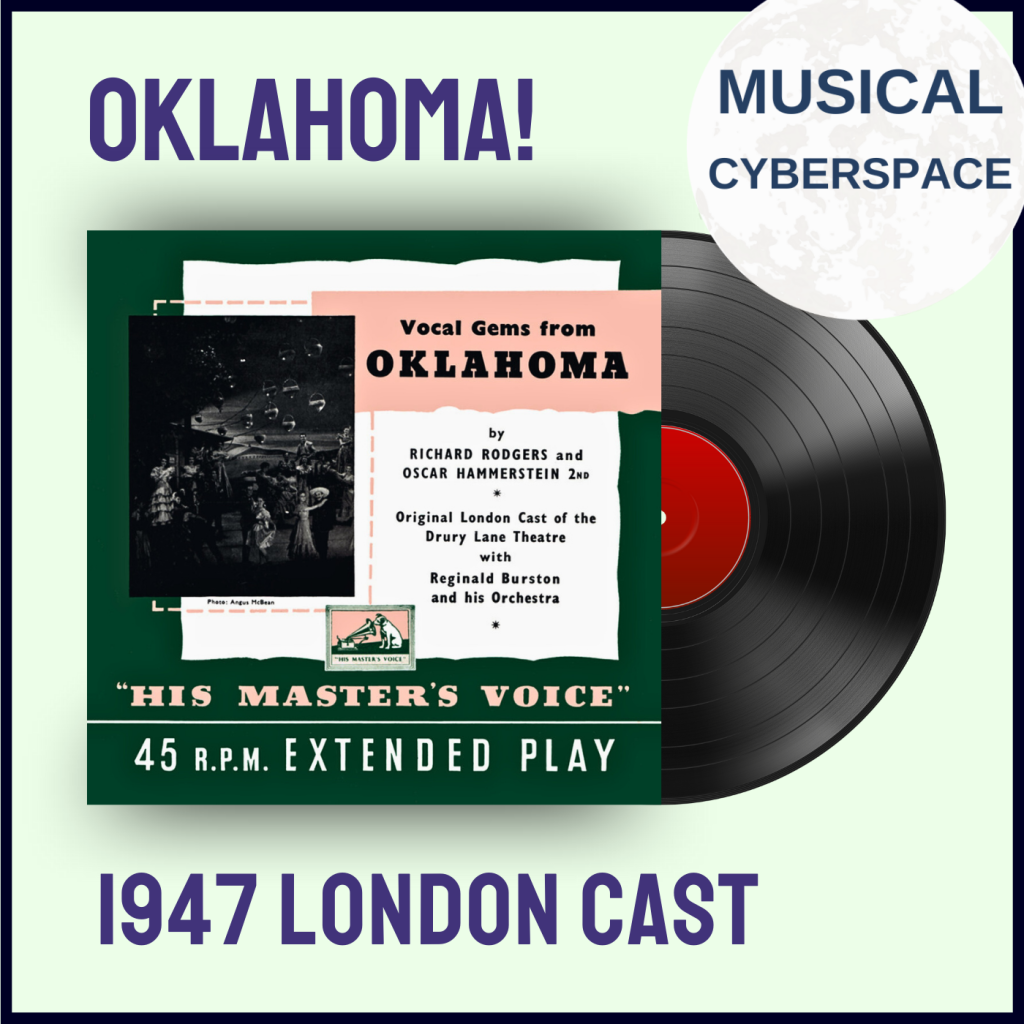
The 1947 Original London Cast Recording isn’t much better than the 1944 studio cast recording. It offers more of the show’s score, but most tracks run through only a verse and chorus before coming to a sudden end.
Starring Howard Keel as Curly and Betty Jane Watson as Laurey, there is nothing wrong with the cast, per se; they just don’t equal their original Broadway counterparts. Keel gives an endearing reading as Curly and Watson is sweet – if a little pitchy – as Laurey. Dorothea MacFarland gives a typically fashioned old-school comic reading of Ado Annie, but she is unable to banish the memory of Celeste Holm, who offers a definitive performance of the songs on the original Broadway cast recording.
This isn’t the recording to get if you really want to experience what Oklahoma! has to offer: the original cast recording, the soundtrack or one of the earlier revivals are better options. This one is a triviality for hardcore fans of the show.
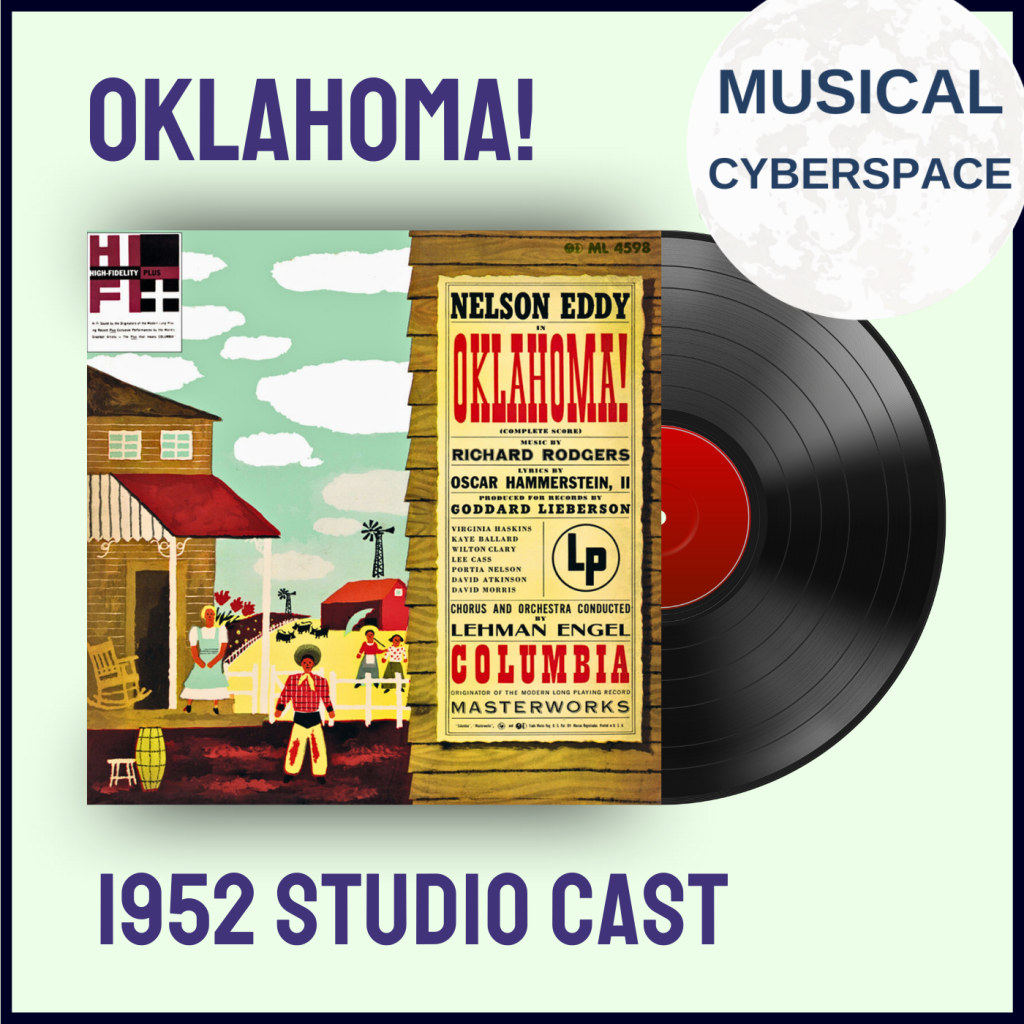
The 1952 Studio Cast Recording of Oklahoma! featured Nelson Eddy as Curly. While the top-billed Eddy himself offers some delightfully acted moments as Curly, the rest of the singers’ success in the roles is mixed. Wilton Clary is a more full-voiced, but less characterful Will Parker than Lee Dixon’s original take on the character. Lee Cass, who plays Jud Fry, sets up some great expectations for his “Lonely Room” in his performance in “Poor Jud is Daid” and his take on the song is just as unsettling as it should be.
As Ado Annie, Kaye Ballard is reminiscent of Celeste Holm but less effective. The least successful of the leads is Virginia Haskins as Laurey, whose vocal delivery is just too heavy. This makes her sound, perhaps, the most likely of all early Laureys to be related to Aunt Eller, who is given a spirited voice in Portia Nelson’s reading of the role. David Morris is similarly lively as Ali Hakim. The ensemble also deserves a shoutout for their investment into what might otherwise be considered a superfluous addition to a studio recording of this time, as evidenced in the 1994 studio recording.
In the final analysis, this is actually a very good early recording of the show. It offers more music than the two original cast recordings and while the acting might not be as good, everyone certainly gives it a good go. There’s a level of care evident in this recording, even with its missteps taken into account.
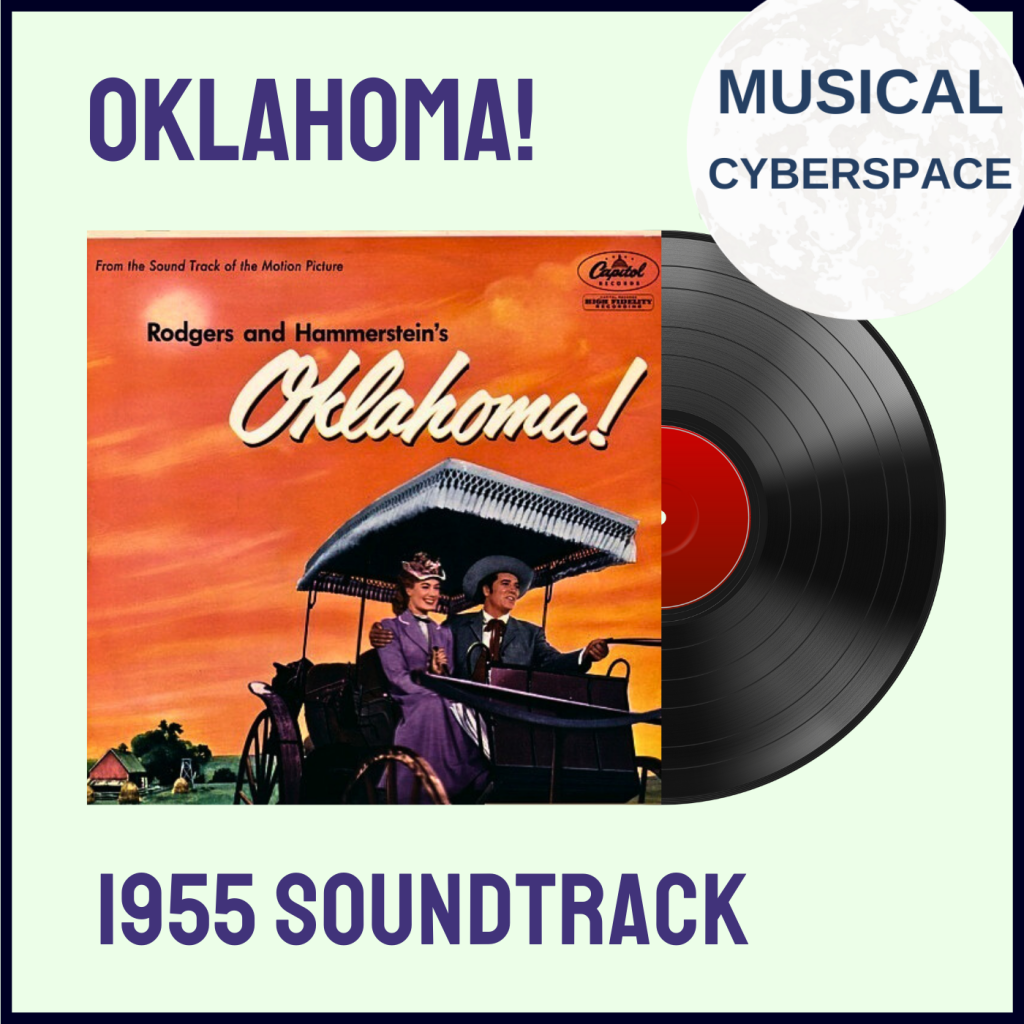
Next up is the 1955 Film Soundrack Recording, which starred Gordon MacRae and Shirley Jones as Curly and Laurey. Both typify the kind of romantic leads that Rodgers and Hammerstein had in mind for the show during the 1940s and 1950s: a dapper, charming and confident young cowboy and a romantic, somewhat highly-strung young woman. Both fill the roles quite nicely and the leading cast is rounded out quite well by Gloria Grahame, a typically character-voiced Ado Annie, and Gene Nelson, who is a charming Will Parker – possibly the best to portray the role on record in the first two decades of the score’s existence.
It’s also interesting to hear a different “Overture”, one clearly capitalising on the most popular numbers of the score rather than on the tunes chosen to set the mood for the stage show, the earlier of the two being the more successful in that regard to my mind. Later releases of the soundtrack supplemented the original pressing with several tracks, including the full “Out of My Dreams” ballet. While it was not the only number cut from the film, “Lonely Room” is perhaps the most glaring omission. Essential to the show, it was excluded from the film and is excluded here – and it is sorely missed.
Following the film’s release, The Music from Oklahoma!, interpreted by Nelson Riddle and his Orchestra, was made available as an ancillary marketing product for the film. An almost totally instrumental look at the work, this was Riddle’s first solo studio affair, and it makes for very entertaining listening. I say almost because there are vocals used to add musical colour to the tracks rather than to sing the lyrics; indeed, a soprano reminiscent of the Star Trek theme’s theremin pops up in songs like “Oh, What a Beautiful Mornin'” and “People Will Say We’re in Love,” lending these standard a touch of camp irony. If you haven’t ever given this album a spin, you should.
Cast recordings of the show pretty much made way for a slew of studio recordings until 1980, when we got a double whammy from both sides of the Atlantic. The 1979 Broadway Revival Cast Recording (which was released in 1980) offers us more music than we’d heard to date on a cast recording of this kind. Including many short interludes that lead into numbers, the disc tries to offer a sense of drama, with vocals echoing in the distance when people enter from offstage, at the top of the show, for example, when Curly sings the start of his song in the distance as he approaches the farm. The leads are pretty solid, sounding more authentically mid-Western than their 1940s counterparts, but both are overshadowed by the supporting cast: an effervescent Christine Ebersole as Ado Annie, an endearing Harry Groener as Will Parker and a rascally Mary Wickes as Aunt Eller. The orchestra is lively, the choral singing is rock solid and the principle cast is committed to telling this story. As a result, this recording comes closest to reproducing the energy of the 1943 recording while still interpreting the material in a unique manner. With the reprises, “Lonely Room” and “It’s a Scandal” all present, the only major exclusion on this recording is the dream ballet.
The 1980 London Revival Cast Recording tried using a different strategy to communicate the vitality of the show by offering a live recording of a performance from the run. To that end, it doesn’t achieve anything that any of the in-studio cast recordings have not and the album is beset with lamentable technical troubles to boot, with strange fades in and out of some tracks and everything sounding as if it were recorded from behind a curtain of water. Applause tacked on the end of tracks does not make the recording more energetic. Furthermore, none of the performances impress. John Diedrich delivers a Curly very much in the Gordon MacRae mode; Rosamund Shelley is a shaky Laurey who sounds like she’s struggling to take on the vocal demands of the role; and Mark White and Jillian Mack are undistinguished as Will and Ado Annie. A disappointment through and through, this is surely one of the least successful recordings of the show’s score to date.
On its third attempt, the West End did finally offer a cast recording of the show that is worth buying. The 1998 Royal National Theatre Cast Recording features Hugh Jackman and Josephina Gabrielle as Curly and Laurey and offer, perhaps, the most human readings of the two roles to date. Maureen Lipman is delicious as Aunt Eller and Shuler Hensley is a most menacing Jud, truly plunging the depths of the character and offering a very compelling threat to Curly and Laurey’s happiness. Although they don’t quite live up to the 1943 Broadway originals or 1979 Broadway revival’s pairing, Vicki Simon and Jimmy Johnston are personable as Will Parker and Ado Annie. With the ballet music included, as well as all the songs – along with snippets of dialogue that provide some dramatic context for the pieces – London finally has a recording that can stand alongside the original Broadway cast recording.
So which to choose? I’d say that the 1943 Original Broadway Cast Recording is indispensable. Supplement that with either the 1955 Film Soundrack, the 1979 Broadway Revival Cast Recording or the 1998 Royal National Theatre Cast Recording and you’ll be all set to enjoy just about everything this show has to offer. That said, the show was recently revived on Broadway again in a landmark staging, and you’d need to add the 2019 Broadway Revival Cast Recording to your collection; its different take on the material makes it a must-have. Still not satiated? You could check out the 2023 Complete Studio Cast Recording of the show (the performances aren’t definitive, but having every bit of music written for the show makes up for it ) or one of the many studio recordings, like the 1964 Studio Cast Recording starring John Raitt and Florence Henderson.
Film and DVD Reviews
There are two versions of Oklahoma! available on DVD: the 1955 film and the DVD adaptation of the 1998 RNT revival. Both are interesting in their own right, with the 1955 film – which preserves much of the landmark Agnes de Mille choreography from the 1943 Broadway production – oftentimes being better than one remembers it and the 1998 RNT offering a by now expected so-called darker take on the material, with its more integrated approach to casting and a couple of revisions to the book of the show that sometimes work and sometimes appear perhaps a little too forced. I’ll look at each one individually, before summing up my thoughts on both adaptations.
The 1955 film was not the first Rodgers and Hammerstein collaboration to appear on film. The similarly styled bur less ambitious State Fair preceded it by a decade or so and the game certainly had changed by 1955. Filmed in two versions, TODD-AO and Cinemascope, it is quite interesting – though time-consuming – to compare the two, with the TODD-AO version coming in as the more lively and vibrant version. The first half of the film really makes the most of the location shooting in Arizona, with the natural landscapes lending a spirited sense of freedom to the proceedings and offering an important contrast to the two main interiors seen in the film, the inside of Aunt Eller’s farmhouse and Jud’s smokehouse, which themselves contrast one another quite sharply. The second half of the film, set largely at night suffers in comparison, feeling sparse and studio-bound. The night sky never feels believable – nor does the time line reflected by the light in the locations really – but perhaps what is most lacking is Fred Zinnemann’s sensibility regarding how to get the characters and the countryside to co-habit the same frame. Zinneman’s approach seems as though he generally shoots from the front, getting as much in the frame as he can, with rather standard close-ups popped in when necessary. He doesn’t quite crack the blending of the realistic settings with the heightened style of the piece itself and de Mille’s stylised choreographic work. There are times when he comes close, even moments when he does – and these are among the best in the film.
The cast offers a convincing reading of the characters. Gordon MacRae is something of a dream as Curly, balancing the act of being attractive to Laurey with the headstrong arrogance that Laurey needs to keep in check quite well. Shirley Jones, in her film debut, is likewise appealing as Laurey. Both are absolutely suited to the style of this production at this point in film history and their casting in these roles works beautifully, something which can’t quite be said of their teaming in Carousel the following year. Gene Nelson is a charming Will Parker: easy and graceful and athletic, he also manages the comedy well. Gloria Grahame hits all the right notes as Ado Annie, but she simply looks too old compared to Laurey and she is certainly too old to have only recently filled out in all the right places. Charlotte Greenwood holds everything together as Aunt Eller, managing the character’s sharp tongue and the twinkle in her eye perfectly. Rod Steiger as Jud Fry, the outsider-villain of the show, is a menace in every shot. While he lacks the song from the stage show that gives the character a dynamic unseen in the film, Steiger packs a great deal of the psychological subtext of the character into his work and one wonders whether the song, essential on stage, would have added much more to the role on film. It helps, of course, that he appears in the “Dream Ballet”, in which a Dream Curly and Laurey replace MacRae and Jones. In those roles, James Mitchell and Bambi Linn execute de Mille’s fantastic choreography, but the medium makes the switch rather jarring, even though it is as smartly conceived as it could be. It’s just one example where what worked on stage in the original production doesn’t quite work in the more intimate medium of film. It is, however, so fantastic to have de Mille’s work documented on film and it is quite marvellous to see how she encodes a characterful vocabulary into her work. The one piece that doesn’t really wash with me is the dance that appears in the middle of “All Er Nuthin'”, which to my mind doesn’t really work for the character or the story being told at that precise moment in time.
Although most certainly a product of its time, the film is still highly watchable today and it certainly is something of a record of what a mid-twentieth century Oklahoma! would have looked like, both in terms of the way it would have been cast and in terms of the style in which it was most likely performed.
The revival of the show mounted by the Royal National Theatre is, by contrast, a revisionist version of the show. There are some obvious changes that are immediately noticeable: Laurey’s tomboy-style dungaree costume, the elimination of doubles in the dream ballet, the new choreography by Susan Stroman, the new arrangements for the musical numbers, added bits of dialogue and so on. The production is vibrant and played for all it is worth and only really suffers as an interpretation of the show when director Trevor Nunn and his team of creatives and actors do not trust the audience to understand what is going on in the subtext of the material and force the point home too obviously. Two examples spring to mind immediately: the staging of “People Will Say We’re In Love”, which at first seems refreshing but becomes overstated and overly obvious – a flaw that throws out the delicate balance of the number as love song and anti-love song, and the moment after the auction in the second act where Curly, a cowman, and Jud, a farmer, are forced to shake hands after a truly deplorable couple of lines of added dialogue so as to force the point home. Yes, we get it. Did we need the laboured and patronising attempt to make sure we did? I would like to think not. Some things are better left in the subtext of a show where they belong.
In terms of performances, there is little to fault. Hugh Jackman is an ideal Curly, bold and egotistical as always, but Jackman uses those features of the character to mask a real desire for Laurey’s affections and an insecurity that makes his journey all the more convincing. Josephina Gabrielle makes Laurey the enigma she should be and it is something of a revelation to see her dance what used to be the “Dream Laurey” role. (If only she was dancing at least some of the De Mille choreography…. Not that there is all that much wrong with Susan Stroman’s choreography – it certainly does the job and things like the inexplicable dance break in the middle of “All Er Nuthin” have been trimmed, but there are moments in the Dream Ballet, for example, that lack character and feel just a touch too generic.) Maureen Lipman is a fantastic Aunt Eller, really taking the role of the community’s matriarch to heart, and Shuler Hensley is an impressive Jud, more layered than he must have been half a century earlier, and not only because he has the benefit of “Lonley Room”, which was only cut from the film, not every prior first tier production of the show. Hensley’s Jud is effective because Hensely himself makes the most out of the material given to him. Jimmy Johnston is an endearing Will Parker. If there is a weak link for me, it is Vicki Simon as Ado Annie. The character is there in her head, but it does not all appear in the voice and body, creating a performance that appears too “one-note” in comparison with the rest of the company.
There are also several non-commercial fillings of Oklahoma!, including a carefully constructed reproduction of the original show, which was done by The University of North Carolina School of the Arts. This taping gives a valuable perspective on musical theatre history and insight into the standard of musical theatre production in the 1940s. The entire production is available to watch on YouTube and is embedded below.
Other tapings of the show include the one made when Oklahoma! was performed in concert at the BBC Proms, which is also available in the YouTube playlist above.
It’s evident that this Oklahoma! continues to captivate audiences across generations. Its enduring themes, vibrant characters, and memorable music resonate profoundly, making the show a cherished cornerstone of American musical theatre. Whether experienced on stage or through recordings, the spirit of this classic production continues to inspire and enchant us, leaving an indelible mark on the hearts of all who encounter its rich tapestry of storytelling.
David Fick
Want to discuss Oklahoma!? Read more about the show and participate in discussions on Musical Cyberspace here.
